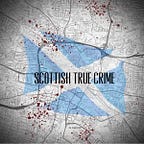The Macdonald Triad
The Macdonald Triad, also known as the “homicidal triad”, consists of three behaviours: bedwetting, fire-setting, and cruelty to animals. It was proposed by psychiatrist J.M. Macdonald in 1963 who initially suggested the presence of the triad in children was a potential early warning sign for the future development of violent behaviour and even serial murder. This article seeks to look further into the components of the Macdonald Triad and evaluate it’s reliability as a predictive model for violence.
Bedwetting: Also referred to as enuresis, relates to repeated involuntary urination, particularly during sleep, beyond the age at which bladder control is typically achieved. While commonly seen as a developmental issue, persistent bedwetting past the age of five has been linked in some studies to stress, anxiety, and family dysfunction (Lindblad et al., 1990).
Fire-setting: Fire-setting or arson involves the deliberate act of igniting fires, often viewed as a manifestation of underlying psychological distress, thrill-seeking behaviour, or a cry for help. Early childhood fire-setting can indicate deeper emotional or behavioural issues, including a fascination with destruction or a method of expressing anger (Kolko, 2002).
Cruelty to Animals: This element is characterised by the intentional infliction of harm or suffering on animals. This behaviour is…
